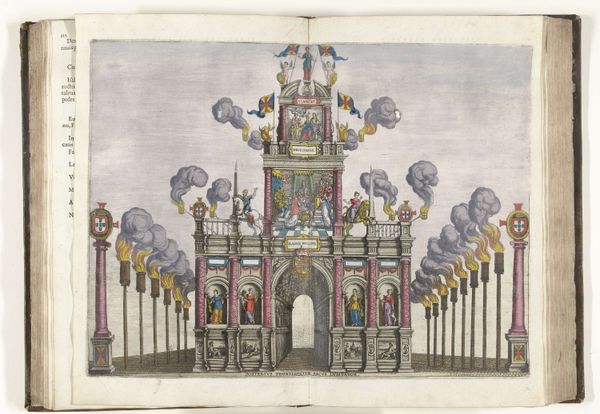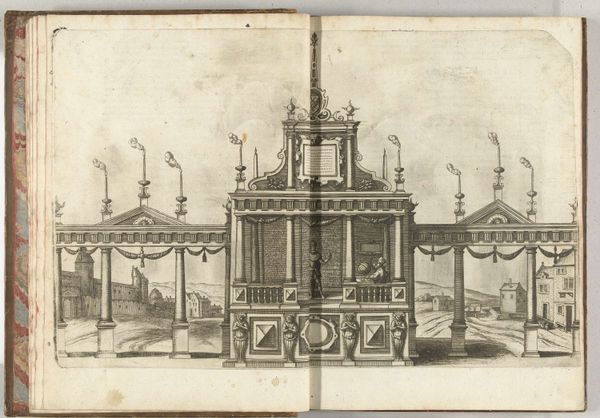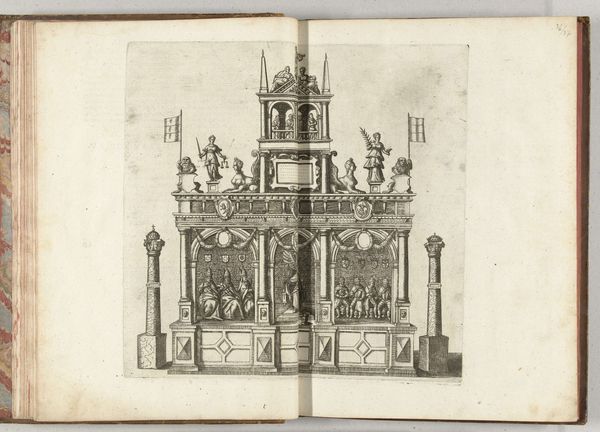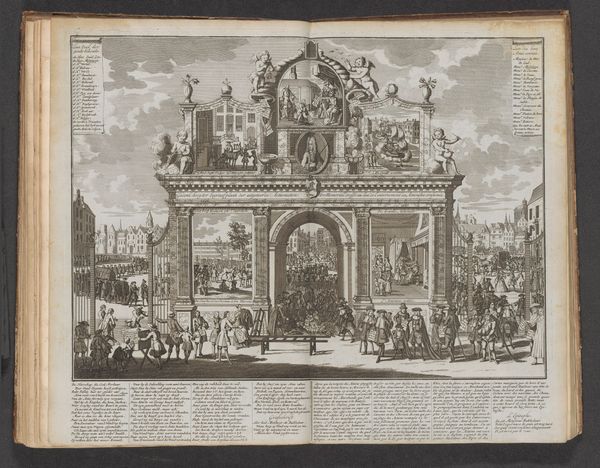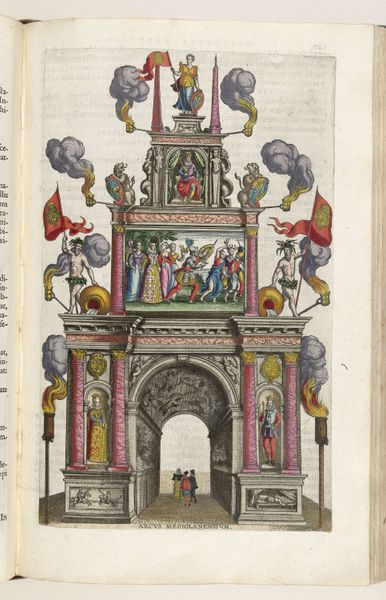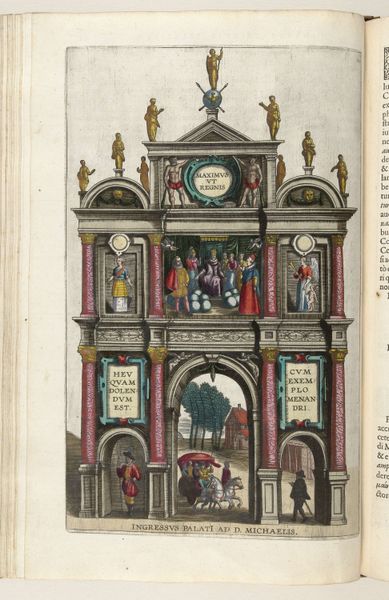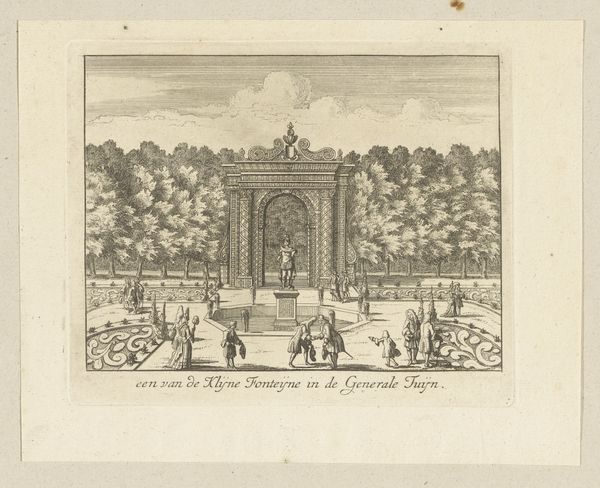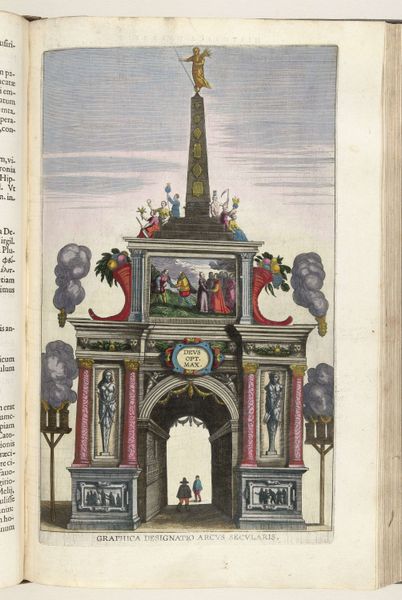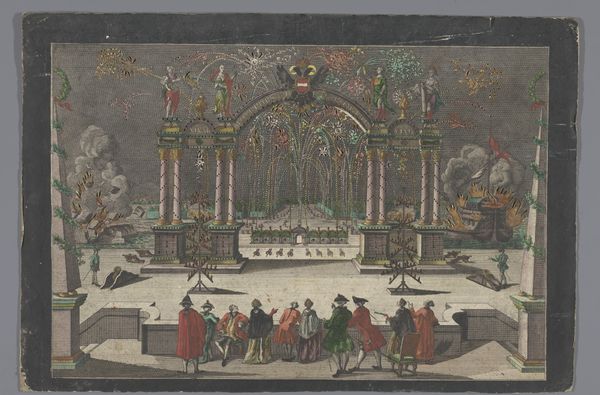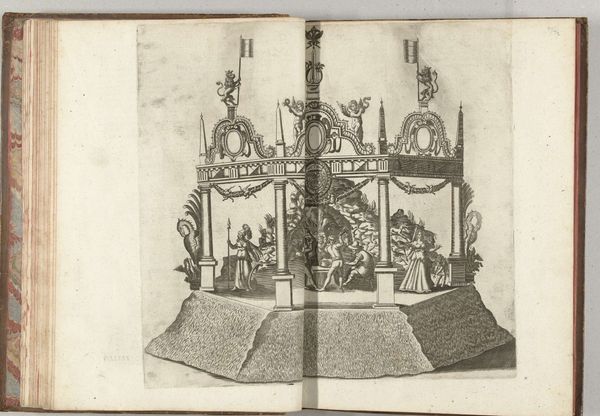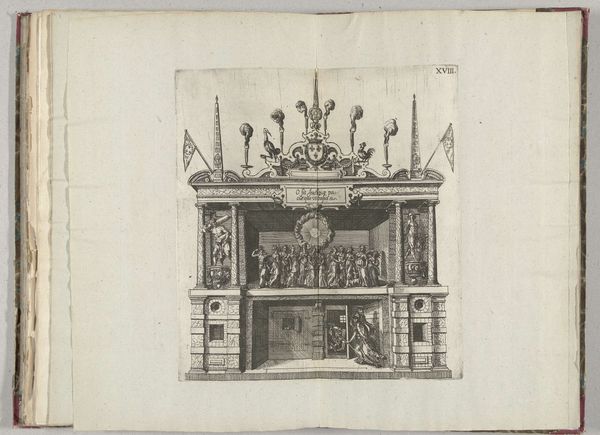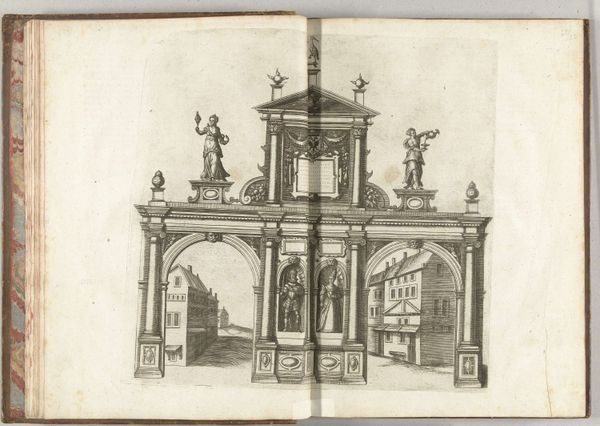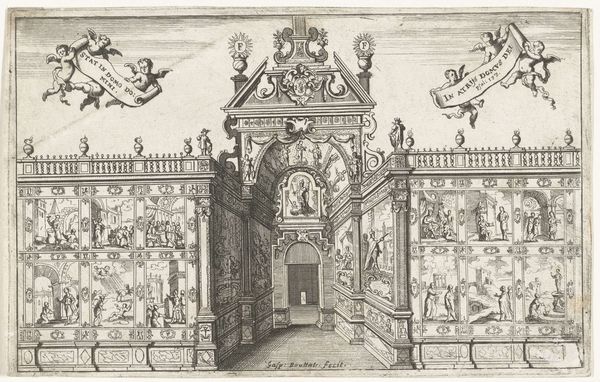
print, engraving
#
baroque
# print
#
coloured pencil
#
cityscape
#
history-painting
#
engraving
Dimensions: height 328 mm, width 435 mm
Copyright: Rijks Museum: Open Domain
Editor: Here we have "The Spanish Triumphal Arch (front)," an engraving and print dating to 1599 by Pieter van der Borcht the First, held at the Rijksmuseum. It's... rather exuberant, isn't it? A bit chaotic. The amount of detail is astounding. What's your read on it? Curator: It’s indeed a fascinating visual document. These temporary triumphal arches were a form of political theater, potent propaganda tools. In the late 16th century, the Spanish Habsburgs sought to project an image of power and piety across Europe. What strikes you about the imagery displayed? Editor: There seems to be a mix of classical and religious iconography. The architecture evokes ancient Roman arches, but there are also figures that look like saints. The plumes of smoke feel dramatic, even theatrical. Curator: Precisely. These arches were designed to shape public perception. The Spanish were very keen on using displays of wealth and piety to cement their power during a politically fraught era of religious wars and uprisings. Notice how the arch presents a particular narrative to viewers; who do you imagine this performance was primarily aimed towards? Editor: Perhaps the local population in the Netherlands, to impress upon them the might and divine right of the Spanish rulers? It almost feels like a carefully constructed PR campaign in visual form. Curator: Exactly. Think about the very *act* of creating and distributing a print of such a fleeting architectural structure; the intent would have been to extend the life and influence of the Habsburg brand. And where do you think the common people factor into this campaign? Were they persuaded? Did they resist? That is where the most complex stories often reside. Editor: That is a fantastic way of looking at it! I now see this artwork as not just a pretty picture, but as a piece of political messaging, a window into a power struggle. Thanks! Curator: Indeed. Understanding art in this context helps us to decode the motivations and anxieties of past societies. A worthwhile lesson!
Comments
No comments
Be the first to comment and join the conversation on the ultimate creative platform.
